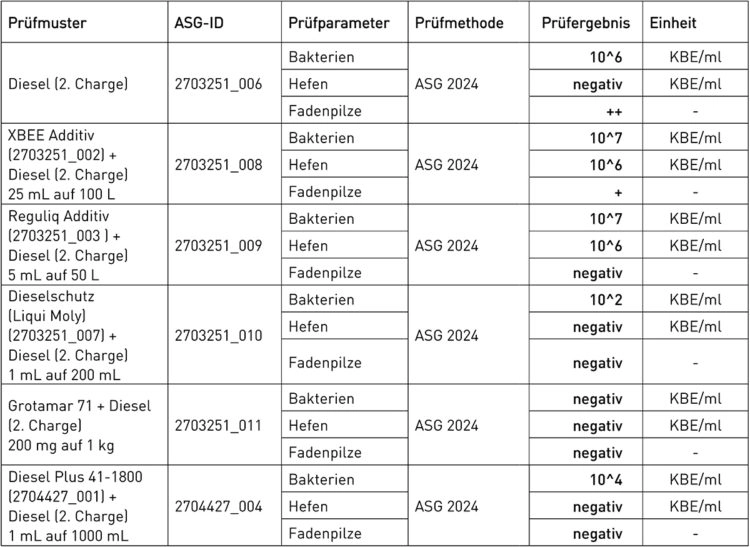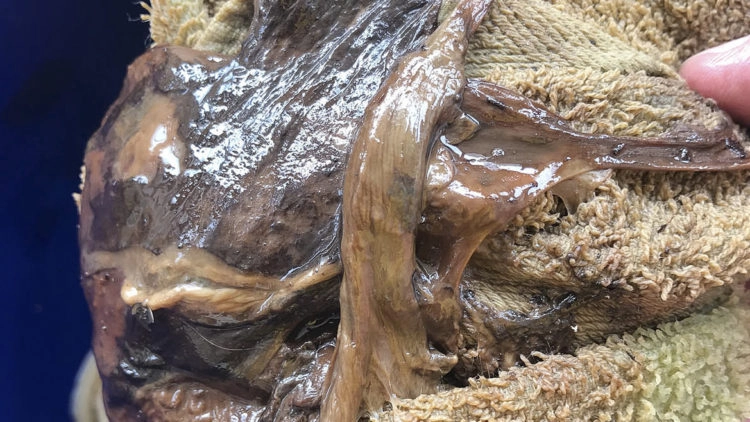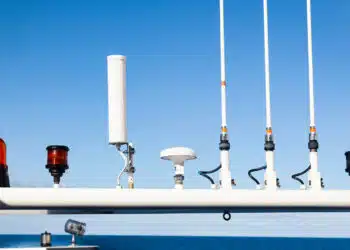This year, not only the owners suffered from this, but also the fuel in the form of diesel plague: due to the corona pandemic, in 2020 many ships remained in winter storage much longer than originally thought. This was literally a food for bacteria, yeasts and filamentous fungi, which were able to spread very well in the diesel tanks. Even if the consequences of the diesel plague, soiled fuel filters, failed engines and damage to the tank and fuel system are not immediately noticed, sooner or later there is a good chance that the affected skippers will be hit at the very moment when they cannot use the consequences described above at all.
Dieselpest additives also for private users
The additive industry had developed an effective antidote to prevent the diesel plague with biocide-containing additives, but with the amendment of the Chemicals Prohibition Ordinance, precisely these biocide-containing additives are banned, at least in the hands of private users. Throughout the EU, they may now only be sold to businesses. For them, the market leader Grotamar can still be purchased. However, the manufacturers ERC and Liqui Moly have also been very successful in their research into additives that can also be used by private individuals in the fight against the diesel plague.
First test of the new additive generation
Since the often full-bodied advertising statements of additive manufacturers are difficult or impossible to verify by end customers, we have taken this as an opportunity to carry out a neutral test in a certified test laboratory to examine the effectiveness of various additives. Here, the wheat of the dubious manufacturers should separate from the wheat of the serious market participants with regard to the statements on the subject of diesel plague. And because more and more suppliers of so-called enzyme additives are entering the market, the well-known manufacturers of XBEE and regiLiQ were also included in the test as representatives of this genus.
ASG – our neutral test laboratory
In order to ensure the greatest possible neutrality in testing the products against the diesel plague, the contract for conducting the tests was awarded to ASG Analytik-Service-Gesellschaft in Neusäß. ASG is a recognised, neutral test laboratory, has been carrying out chemical analyses for its customers since 1992 and has been accredited for the analysis of numerous fossil and biogenic fuels since 1998. Its customers include industrial partners, trade, authorities and service providers in the mineral oil and automotive industries. In short: ASG Analytik is one of the first addresses when it comes to independent, neutral fuel samples.
“Top dog” Grotamar also involved
In order to carry out the diesel test properly, diesel contaminated with bacteria (diesel test) was first tested in the laboratory for the degree of contamination. By the way, this was provided by the company MFT Mikrofiltertechnik from Geesthacht, which is well known in skipper circles. Then the test persons came into play: an enzyme additive from XBEE and reguLiQ as well as Grotamar 71, Liqui Moly Dieselschutz and Diesel Plus from ERC. The products from Liqui Moly and ERC are likely to be particularly interesting in this context, as they can also be used by “normal” end users as successor products to the biocide additives against the diesel plague, which are reserved only for particularly qualified users. Their mode of action with regard to diesel plague has not yet been subjected to a neutral laboratory test.
Liqui Moly, ERC and Grotamar top – enzyme additives fail
After the bacteria-contaminated, previously tested starting fuel was mixed with the additives according to the dosing recommendations of the respective additive manufacturers, the first step was to wait. After the prescribed waiting or exposure time for samples of this type had elapsed, the test results confirmed the fears of the fuel and additive experts: no antibacterial effect with the two enzyme additives, and the condition of the starting fuel had even worsened over the prescribed exposure time.
Reliable, on the other hand, was the mode of action of the “traditional” products: Liqui Moly Diesel Protection, ERC Diesel Plus (both for end users) and Grotamar 71 reliably and measurably destroyed bacteria, yeasts and filamentous fungi. With the XBEE additive, the number of bacteria continued to increase during the test period, and yeasts and traces of filamentous fungi were also detected. To put it simply and in layman’s terms: the product had no effect, and bacterial growth even increased over the test period.
The situation is similar with the reguLiQ additives: At the time of the test, the homepage still promises that yeasts, fungi, germs and bacteria will be dissolved. However, the test showed that after the sampling period, more bacteria as well as yeasts could be found in the sample.
Excursus: Development of Diesel Pest
To evaluate the result with regard to the diesel plague, here is a small, hopefully understandable digression into fuel chemistry: Bacteria are always the first to form (so-called “prokariotes”). Although the bacteria cause aging in the fuel, they are in themselves not harmful to the functioning of the engine. However, the bacteria are fed by yeasts and fungi (so-called “eukariotes”), which form cell agglomerates, i.e. produce growth, ultimately the actual, visible diesel plague. Apart from the fact that this can lead to rust nests via the often corrosive “excretions”, they tend to clog the system with the residues of the diesel plague when they detach from the surfaces.
MFT microfilter technology: “Diesel plague eats holes in the tank
In this context the tank cleaners of MFT Mikrofiltertechnik provided completely new findings: During their last tour of Croatia, which was carried out on the initiative of SeaHelp, they discovered for the first time that some tanks were literally “pitted” by the legacies of the bacteria. Christian Burmester: “The tanks could easily be pierced with a screwdriver. This was the first time we had seen this development in relation to diesel plague.”

Mit dem Laden des Videos akzeptieren Sie die Datenschutzerklärung von YouTube.
Mehr erfahren
Interpretation of the diesel test
In order to interpret the table with the test results correctly, here is a short preliminary remark: The amount of bacteria and yeasts are shown as colony forming units (CFU) in the power of ten (10² corresponds to 10×10=100; 10³ corresponds to 10x10x10=1000; … etc.). This unit of measurement is used to determine the number of living microorganisms and denotes single or several connected individuals of microorganisms that form a colony by multiplying in or on a nutrient medium, the so-called diesel plague.
The top line shows the initial situation of the diesel sample examined which was treated with the additives. Bacteria and a large number of traces of filamentous fungi were detected, but yeasts were not.
The increases and decreases in the measurement results appear to be small at first glance, but on closer inspection they are absolutely significant orders of magnitude, since a change of only one power of ten means a tenfold increase in the number detected or the corresponding decrease by a factor of 10 per millilitre of fuel sample.
In the sample mixed with XBEE, a significant increase in bacteria, a very significant increase in yeasts and a slight decrease in filamentous fungi was thus detected after the sampling period. The situation was similar in the sample mixed with the Reguliq additive. Bacteria and yeasts increased massively, filamentous fungi were not detectable. Nevertheless: A suitability for the prevention of diesel fungus can be denied to both products according to the test results.

The Liqui Moly additive and the ERC additive protect against diesel plague
The freely available Liqui Moly Diesel Protection against Diesel Plague showed a very clear decrease of bacteria, yeasts and filamentous fungi were no longer detectable, as well as the freely available Diesel Plus Additive against Diesel Plague from ERC (bottom line).
Neither bacteria, yeasts nor filamentous fungi were found in the sample of Grotamar 71 additive. However, this additive against diesel plague is not approved for free sale to end consumers. It can, however, be added to the fuel by tank cleaners, marinas, service companies or petrol station operators, for example, or sold to tradesmen and is also regarded as an effective protection against diesel plague.
Judgement on the subject of enzyme additives
However, enzyme additives should generally not be an issue for skippers. In this context, reference is made to a judgement of the Regional Court of Karlsruhe, which was obtained by the Zentrale zur Bekämpfung des unlauteren Wettbewerbs Frankfurt am Main e.V. under file number 13 O 44/14 KfH 1. In this ruling, Blackpower GmbH is prohibited by the court from advertising with statements such as universal functionality in fossil fuels and biofuels, improved combustion with 6 % to 15 % fuel savings, as well as reduced pollutant emissions and significantly lower fuel consumption. In particular, the court criticised the “lack of a scientific basis for the effect claims made”, as is evident from the ruling.
Practical test SeaHelp: Additives work
SeaHelp was able to confirm the effectiveness of the ERC additive against diesel spills in practice with its own test: After one year of regular use in accordance with the recommended dosage, the yacht’s tank remained brilliantly clean, with no trace of the bacteria left behind when the tank was checked for diesel sickness after one year. The fuel filters also showed no signs of diesel sickness. In order to maintain neutrality here as well: According to the chemical composition of the respective products against diesel plague and the results of the investigation a similar result could have been expected from the Liqui Moly product.

















